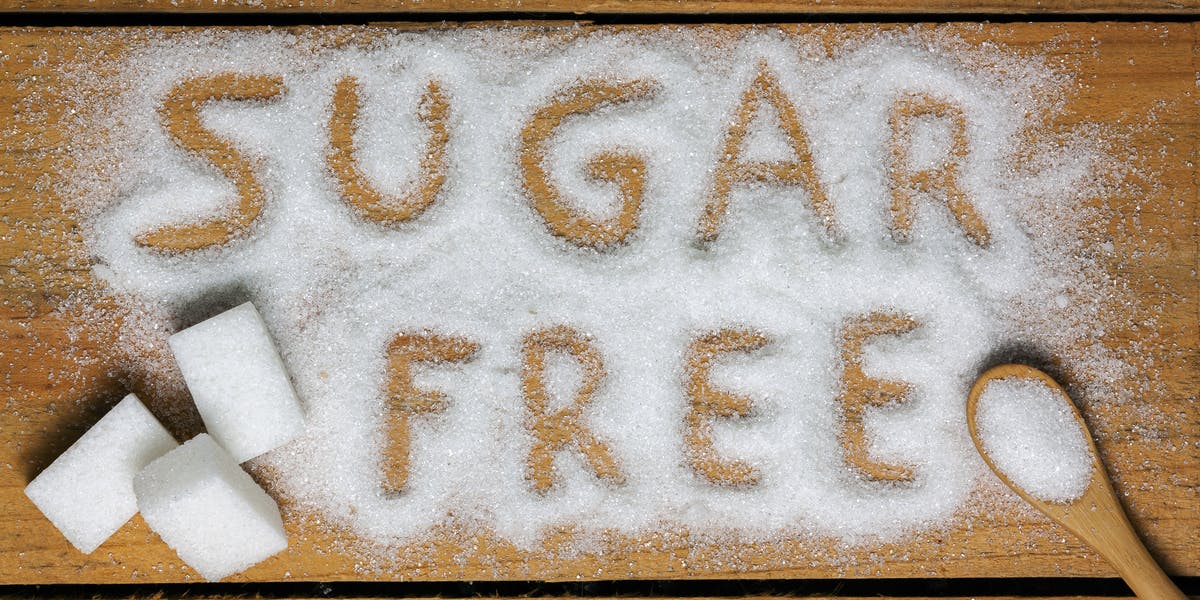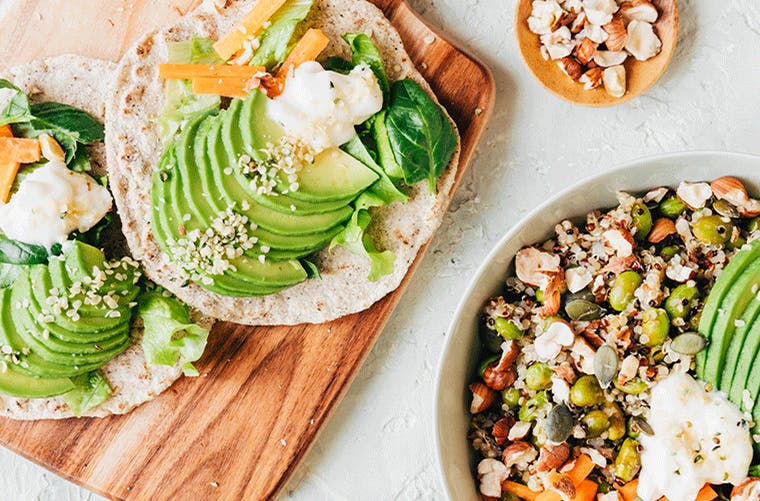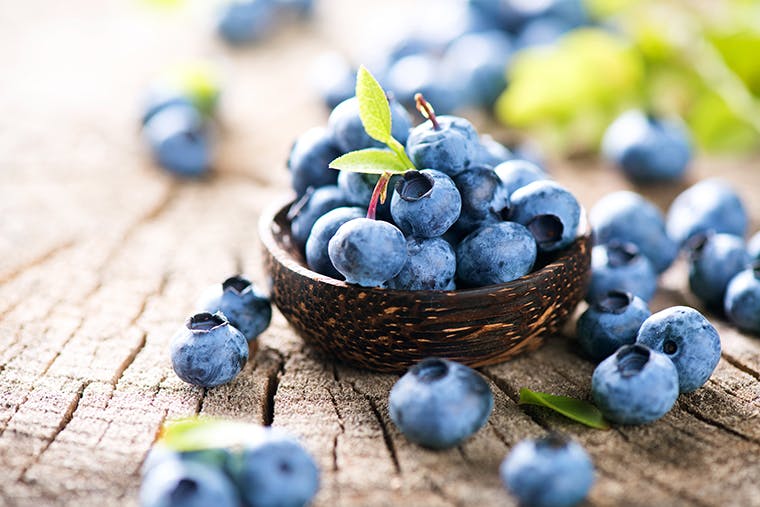Sugar Free, No Sugar Added and Zero Sugar – What Do They Mean?

When you go grocery shopping, it’s easy to feel overwhelmed by the sheer number of similar products available. The cereal aisle alone is a blitz of different claims: Gluten free! Added fiber! Fortified with B vitamins! But when you look at things like cereal, juice, yogurt and other items that may be sweetened, the claims about sugar, or lack thereof, may be hard to decipher. Learn the difference between nutritional claims like “sugar free,” “zero sugar” and “no added sugar” so you can shop with confidence.
What Is a Nutrient Content Claim?
In the US, the Food and Drug Administration (FDA) is tasked with ensuring that customers are provided with accurate information on food labels, so they can make informed choices.1 A nutrient content claim describes how much of a nutrient is present in a food product and can be expressed using terms like “free,” “high” and “low.”2 Nutrient content claims can also compare the amount of a nutrient to the amount of another food through use of terms like “more,” “lite” and “reduced.”2
What Do Different Claims About Sugar Mean?
Here’s what the sugar content claims for various foods actually mean. Keep in mind that these terms are tightly regulated by the FDA in order to accurately describe the amount and type of sugar contained in packaged food products.
Sugar Free
One serving of a product contains less than 0.5 grams of total sugars, regardless of if they’re natural or added sugars.4 Other terms for sugar free include:4
- Free of sugar
- No sugar
- Zero sugar
- Trivial source of sugar
With this in mind, if you’re comparing two products and one says “sugar free” and the other says “zero sugar,” you’ll know the terms mean the same thing.
Reduced Sugar
This term compares one version of a product to another, and the one labeled “reduced sugar” must contain at least 25% less sugar than the regular version of the product.4 This term can only apply to food and drink, and cannot be used to describe a dietary supplement.
Other terms for this include:4
- Less sugar
- Low in sugar
- Lower sugar
No Added Sugar
This term refers to food and beverages that only have naturally occurring sugars, and that no additional sugars or ingredients containing sugar were added during processing or packaging.4 Because of the way regulations are positioned, products can still have naturally occurring sugar in them and be considered a “no added sugar” product. This phrasing shouldn’t be confused with “zero sugar” because zero sugar actually means that one serving of the product contains less than 0.5 grams total sugars, accounting for natural and added sugars.
Other terms to describe “no added sugar” include:4
- Without added sugar
- No sugar added
What Do Other Sugar Content Claims Mean?
There are thousands of products on store shelves making claims of being low in sugar or without sugar entirely. The FDA has specific regulations for making any type of "sugar free" claim, which are intended to keep food manufacturers and distributors honest and non-misleading.1
When you look at a Nutrition Facts label on a packaged food or drink, you may notice under the bold “Total Carbohydrate” heading, there are a few lines about sugar. Labels are required to declare total sugars and added sugars.3
Total Sugars
The line on a label for Total Sugars includes the amounts of sugars that are naturally present in a given food, as well as any sugars that may have been added during production and remain present.3 There is no Daily Value for how much total sugar a person should consume in a day.3 However, there is a Daily Value for added sugars which is 50 grams per day based on a 2,000 calorie daily diet.
Added Sugars
These sugars include:3
- Sugars added during processing, like dextrose
- Foods like table sugar that are packaged as sweeteners
- Syrups and honey
- Sugars in concentrated juices made from fruits and vegetables
These added sugars do not include those that naturally occur in products like milk, fruits and vegetables. The Daily Value is 50 grams per day based on a daily diet of 2000 calories.3
For single-ingredient sweeteners like table sugar, honey and pure maple syrup, the nutrition label may look a little different in how sugar is listed. For example, the percent Daily Value for added sugars is listed within the nutrition facts, while the serving amount and %DV is included as a footnote on the bottom of the label. This is to ensure that consumers can make informed choices.3
Making Informed Choices
When you see a sugar content claim on the packaging of an item, take a look at the nutrition facts and ingredients list in order to make an informed decision about that product.4 Just because a product has lower sugar than its regular version, that may not mean that it’s necessarily a better product. After reading this article, you’ll be able to make more informed choices when choosing between sugar free, no sugar added and zero sugar products.
One way to reduce sugar in your diet is to make water your default drink and limit sugary drinks like soda, fruit juices and energy drinks.4 If possible, choose products that are naturally sweet or entirely unsweetened.4
SOURCES
- Guidance for Industry and FDA: Dear Manufacturer Letter Regarding Sugar Free Claims. United States Food and Drug Administration. https://www.fda.gov/regulatory-information/search-fda-guidance-documents/guidance-industry-and-fda-dear-manufacturer-letter-regarding-sugar-free-claims. Accessed 10/3/2023.
- Label Claims for Conventional Foods and Dietary Supplements. United States Food and Drug Administration. https://www.fda.gov/food/food-labeling-nutrition/label-claims-conventional-foods-and-dietary-supplements. Accessed 10/3/2023.
- Added Sugars on the Nutrition Facts Label. United States Food and Drug Administration. https://www.fda.gov/food/nutrition-facts-label/added-sugars-nutrition-facts-label. Accessed 10/3/2023.
- What’s the Difference Between Sugar Free and No Added Sugar? American Heart Association. https://www.heart.org/en/healthy-living/healthy-eating/eat-smart/sugar/difference-between-sugar-free-and-no-added-sugar. Accessed 10/3/23.








































